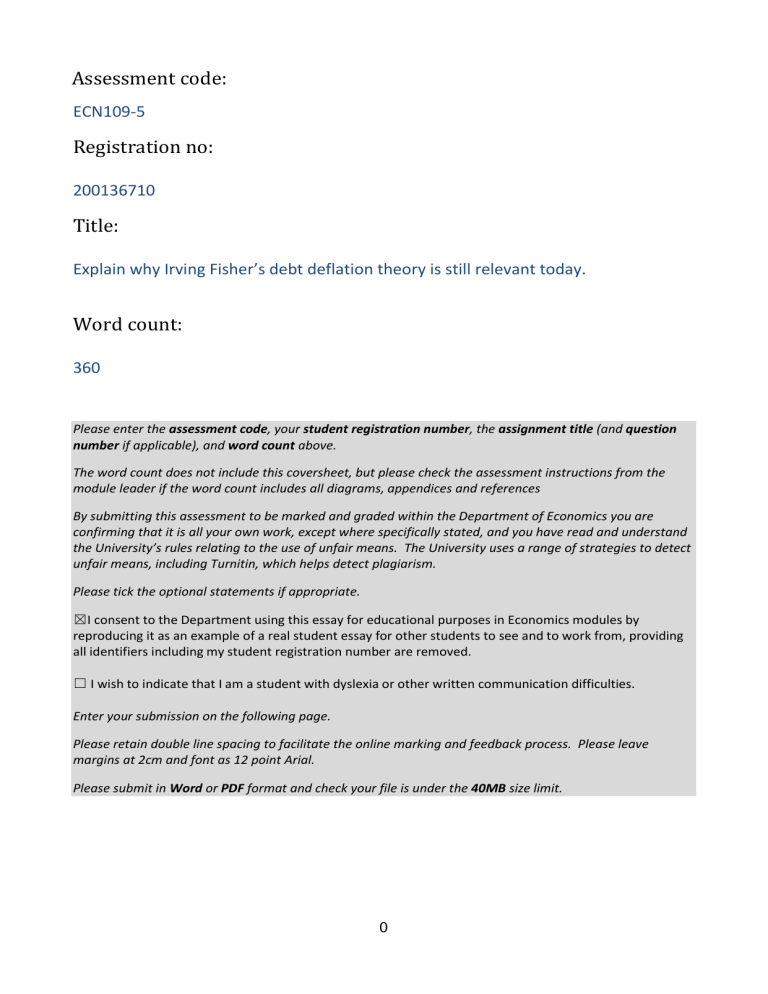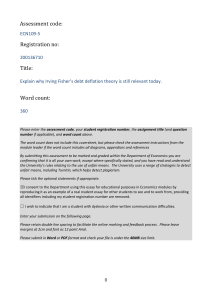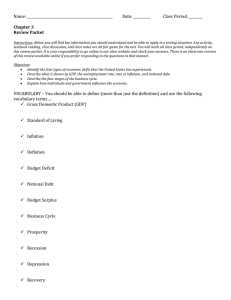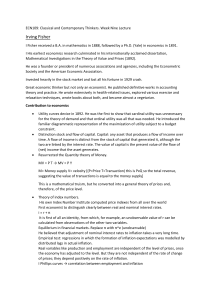
“Assessment code: ECN109-5 Registration no: 200136710 Title: Explain why Irving Fisher’s debt deflation theory is still relevant today. Word count: 360 Please enter the assessment code, your student registration number, the assignment title (and question number if applicable), and word count above. The word count does not include this coversheet, but please check the assessment instructions from the module leader if the word count includes all diagrams, appendices and references By submitting this assessment to be marked and graded within the Department of Economics you are confirming that it is all your own work, except where specifically stated, and you have read and understand the University’s rules relating to the use of unfair means. The University uses a range of strategies to detect unfair means, including Turnitin, which helps detect plagiarism. Please tick the optional statements if appropriate. ☒I consent to the Department using this essay for educational purposes in Economics modules by reproducing it as an example of a real student essay for other students to see and to work from, providing all identifiers including my student registration number are removed. ☐ I wish to indicate that I am a student with dyslexia or other written communication difficulties. Enter your submission on the following page. Please retain double line spacing to facilitate the online marking and feedback process. Please leave margins at 2cm and font as 12 point Arial. Please submit in Word or PDF format and check your file is under the 40MB size limit.” 0 Debt deflation is where the prices of good in a market decreases due to the large amount of outstanding debt and people liquidating assets to try and reduce what they owe. Fisher believed that in order to help borrowers, inflation was needed as it weakened the real value of what they owed and passed on some of the cost to the lenders. Part of Fisher’s debt deflation theory that is still relevant today is in the mortgage market. If a buyer is struggling to pay off their debt amongst debt deflation, the collateral (usually the house) that they are backing their loan with will begin to decrease in value making it harder to pay back the original sum. Bonds are bought by private real estate companies and when a percentage of these mortgages go unpaid, buying the bond becomes a debt to companies meaning they will not lend as there is not enough return. In 2008 this was due to lax lending standards of the ‘real estate bubble’ as people who were not able to pay back loans were granted mortgages. Fisher’s theory of debt deflation also suggests that one individual trying to reduce his debt will often work however if there are many trying to do this it will cause deflation as the supply to the market will increase which brings the overall price down. This technically increases the real value of debt as the cost of borrowing is calculated by the nominal interest rate minus the inflation rate, so when there is deflation the cost is actually increasing. This is relevant to the current economic climate as a lot of people may have taken out loans or mortgage their house due to the coronavirus pandemic meaning there is a large amount of the population in debt. The government could rectify this by using monetary policy to manipulate the interest rates as when they are low inflation increases. According to the Phillips curve, low unemployment causes increase to the inflation rate. The furlough scheme currently being used to keep people employed could also help keep inflation rates higher to help reduce the real value of debt to the borrower. 1







